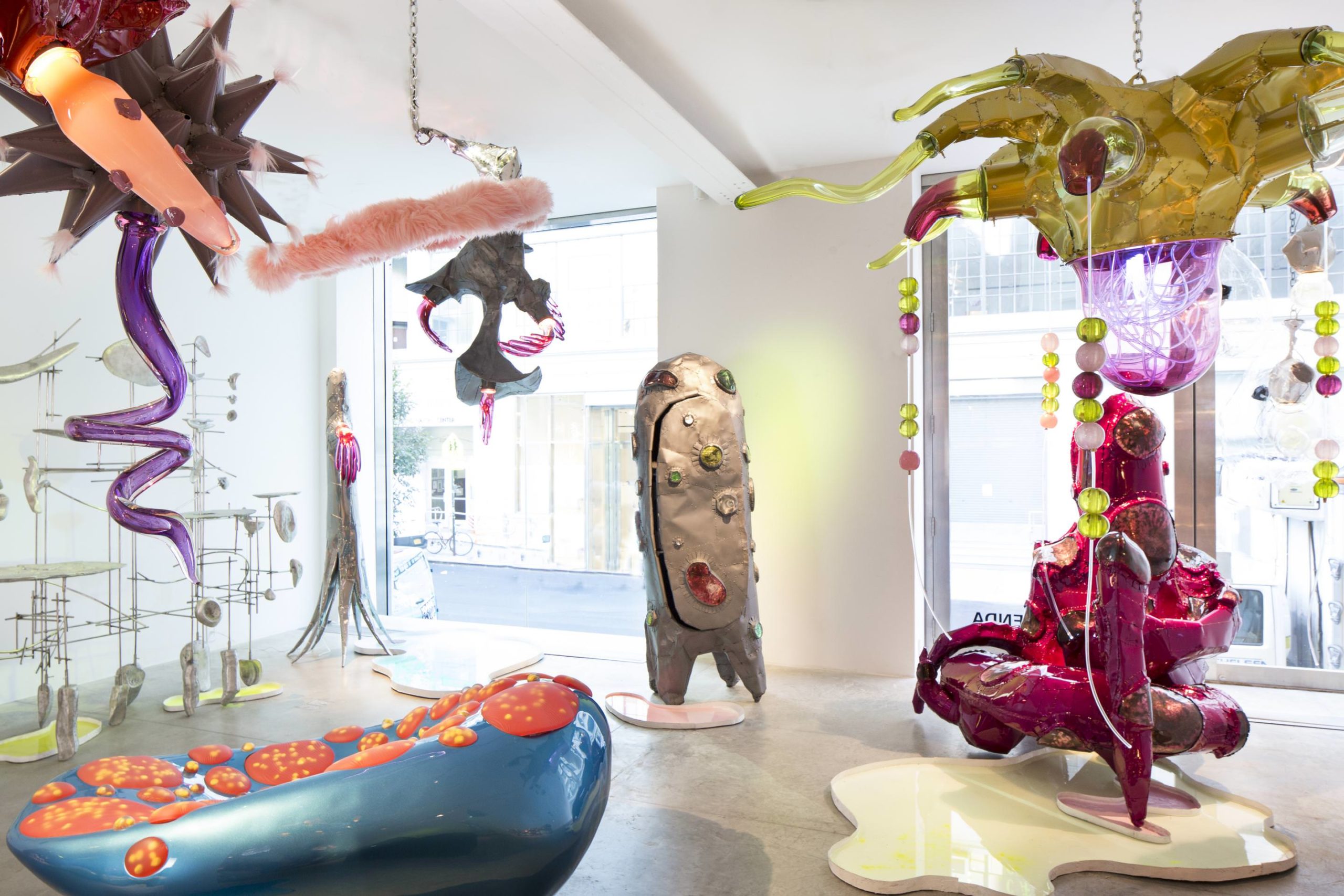The designer Misha Kahn’s creations are unquestionably recognizable. When first seeing his work, the viewer can tell the purpose of the piece—that is, whether it’s a chair or a table—but from there, Kahn’s happiness stems from the fact that “then they can decide what they think about it.” He has previously described his work as “joyful and toxic,” with glittery trash, colorful bottles, and bins of candy wrappers and other people’s discarded sawdust often seen in his Bushwick studio. “It’s just kind of this system of delusion, which I think comes through,” he said of his workspace. “It takes on a very painterly feel in the space because there’s always just splotches of shit everywhere.”
This fall from October 26 until December 16, Kahn will have a solo exhibition entitled “Hidden Meap” at Friedman Benda gallery in New York. On a day trip to Dead Horse Bay in the Rockaways, Kahn observed trash that had gathered ashore, leading to the immersive installation. A combination of weaving, metal cladding, glassblowing, and bronze casting is seen juxtaposed with found objects, discarded possessions, and detritus, debunking the prioritizing of one material over another. The title of show references the peculiarity of the giant pacific octopus to gather heaps of aquatic treasures—an inclination Kahn relates to.
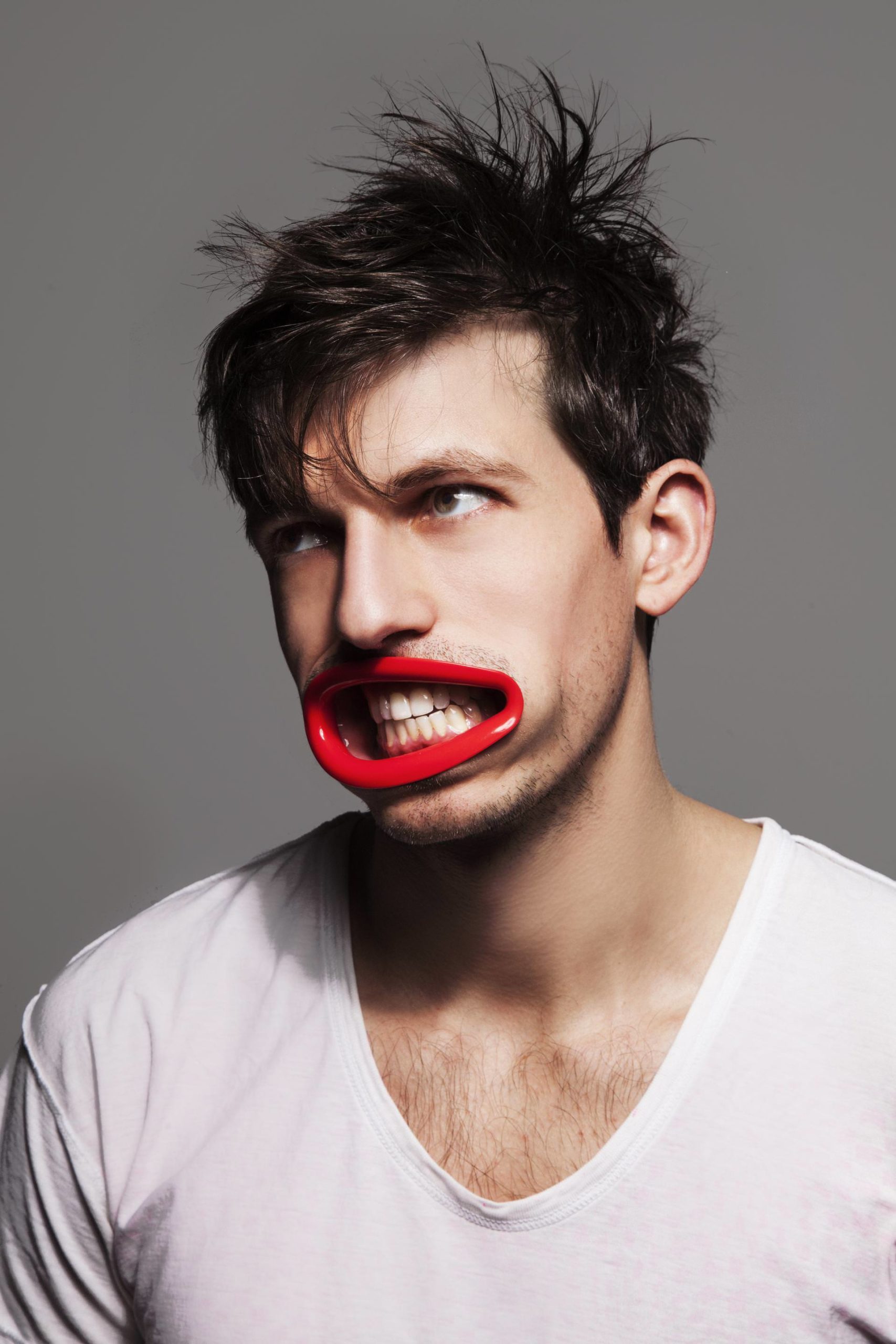
Photo by James Orlando.
Courtesy of Friedman Benda and Misha Kahn.
“The show includes lots of trash collected from the beach and is inspired by these warped and tangled objects as litmus strips for how the sea alters our material world,” said Kahn. “As the sea swallows us, we will be forced to adapt to our new captor. The work includes a frenetic use of stained glass, weaving, metal cladding, glass blowing, and bronze casting. The show explores this overarching aesthetic pressure through my own lens of making—a kind of new craft ethos that welcomes the distracted scatterbrained mind, erratically mixing media and feeling no preciousness about material or method.”
Whitewall spoke to the artist about his love–hate relationship with his art, his past work as a prop stylist, and how his recent creations make the show feel “toxic and claustrophobic,” but also a “celebration of making something energetic and full of life out of nothingness.”
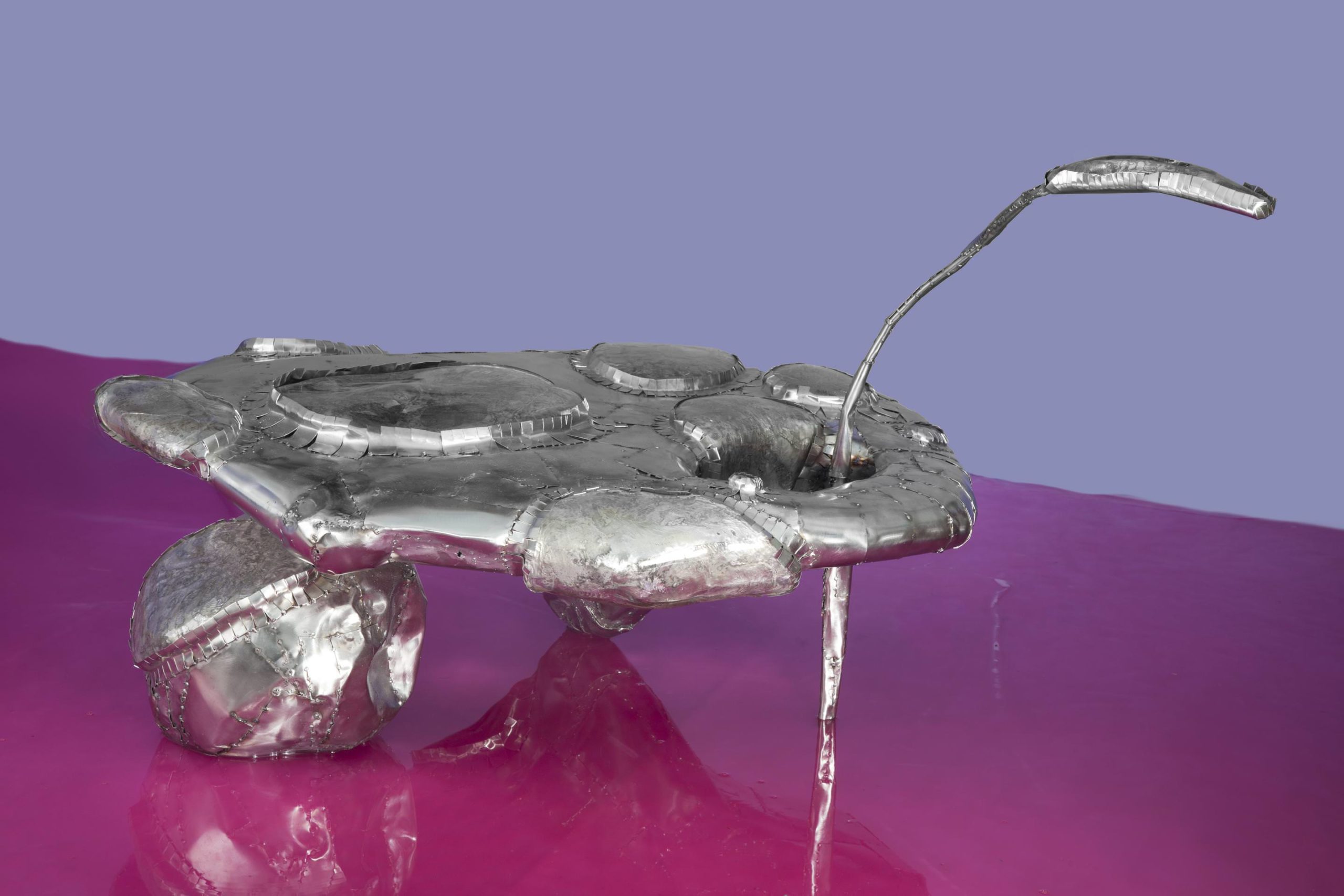
Misha Kahn.
Table.
Photo by James Orlando.
Courtesy of Friedman Benda and Misha Kahn.
WHITEWALL: What initially drew you to design?
MISHA KAHN: What I enjoy about making furniture, and design, is one, scale. It’s something you wouldn’t realize on your own. There’s a little team and there’s some immediacy to it. Also, I just love that there is such a way in for so many people. Art can be a little obtuse and hard to understand. And even if it’s a really crazy chair, I think people can sort of understand that it’s a chair—and then they can decide what they think about it.
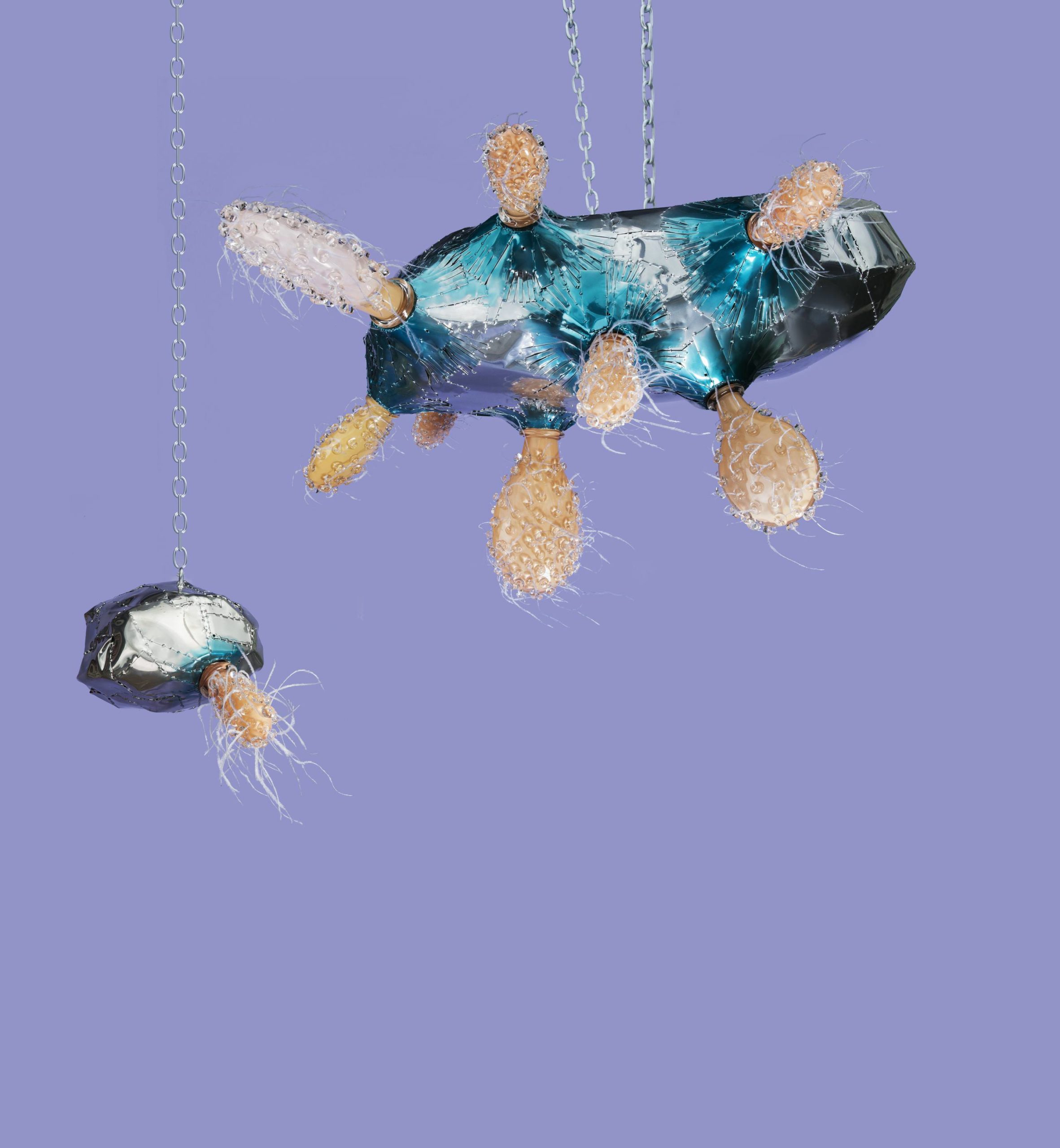
Misha Kahn.
Ponchan, 2017.
Glass, steel.
48 x 28 x 60 inches,
122 x 71 x 152.5 cm.
WW: You’ve described your work as “joyful and toxic.” What do you mean by that?
MK: I think that the relationship between joyful and toxic is something I’m always playing with. It’s kind of sad that there’s so much glitter in the world, but it’s sort of beautiful, too. I think that’s an interesting thing to cope with. We can be ruining something, but in its transient state of ruin, there’s something sort of momentarily beautiful. I don’t want to be encouraging that, but I do still find it kind of fascinating.
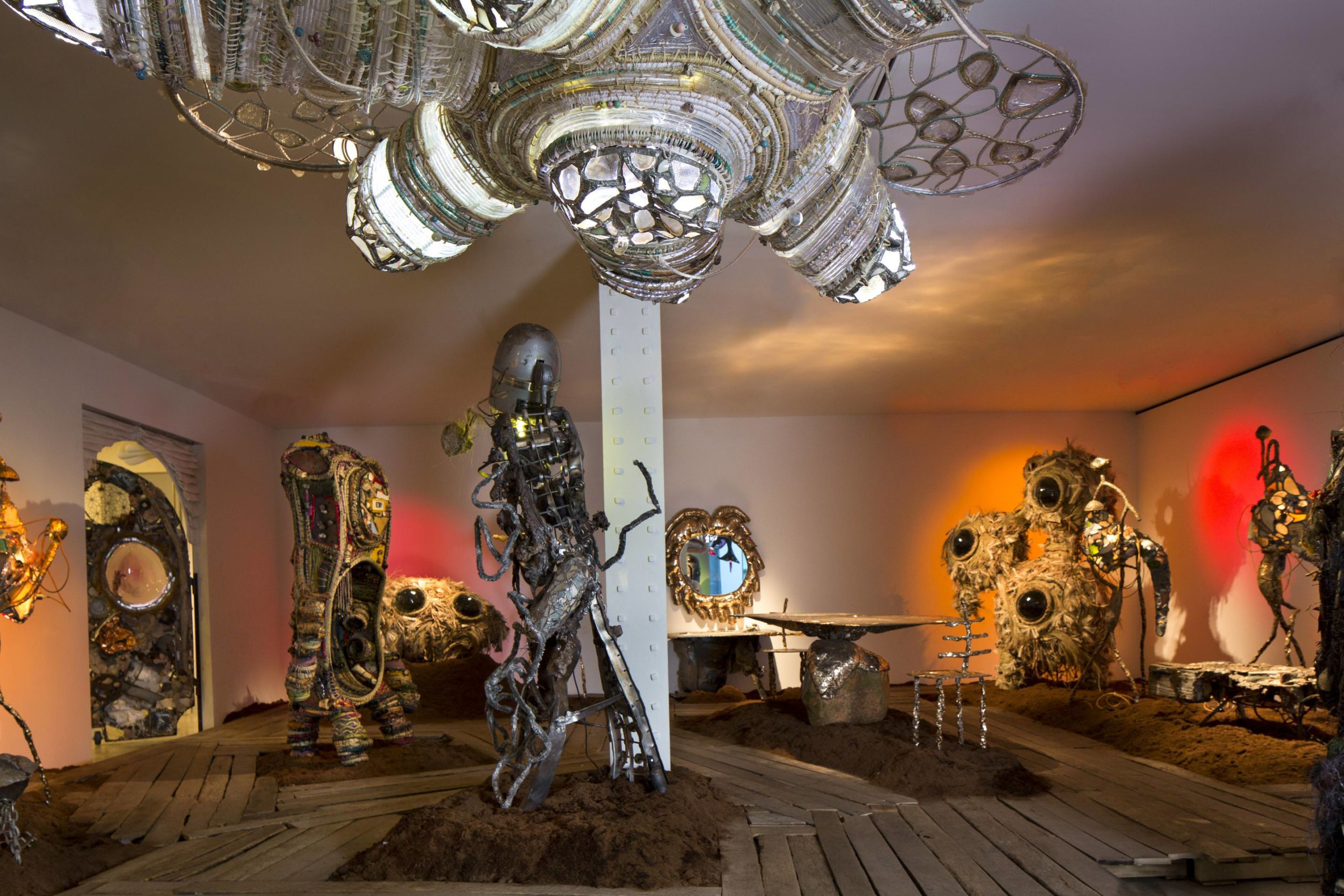
“Midden Heap” at Friedman Benda.
Courtesy of Friedman Benda and Misha Kahn.
Photography by Dan Kukla.
WW: You’ve also been known to have “delusional visions” about the future. What do you think the future will look like?
MK: I’m thinking about what the future will look like in terms of the objects around us. The wave of technology has such a big effect on that, and computers push things to look a certain way. The way people draw is changing, which is affecting all things around us, like the types of buildings we can build. I’m not very tech-savvy—I just do everything with my hands and kind of with no computer—so I just feel like I’m using it as a point of interest to make work about it without participating and sort of just spectating.
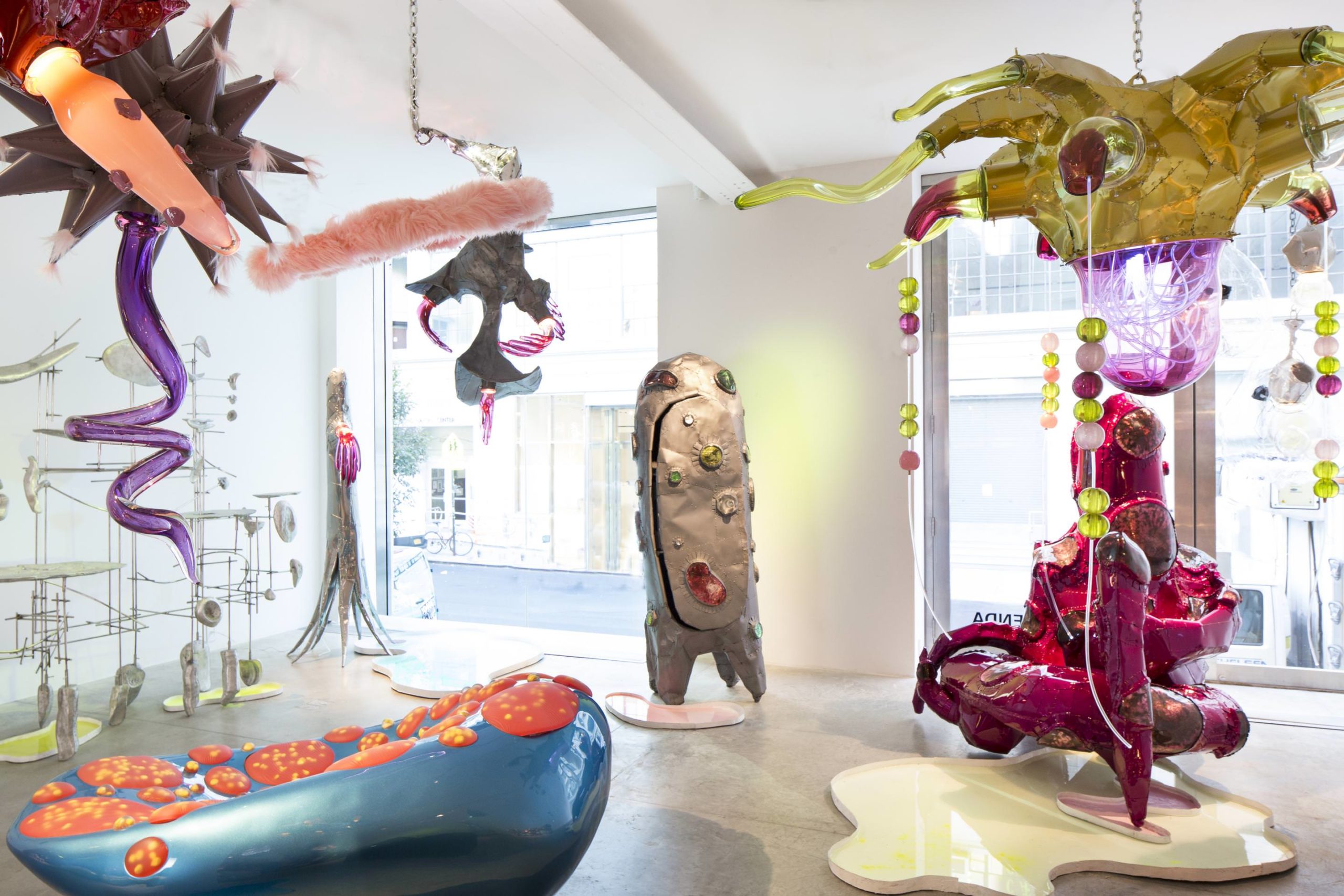
“Midden Heap” at Friedman Benda.
Courtesy of Friedman Benda and Misha Kahn.
Photography by Dan Kukla.
WW: You previously said you were inspired by objects that you didn’t know if you loved or hated. What are those objects?
MK: [Laughs] I think what I mean by that is, you’re making an object and you know it’s going to be good, but it’s just not worth making. You always have to go into it with this uncertainty. And the objects that I’m most proud of are the ones that I’m still a little bit freaked out by. And I think in the show, one of those things that came up was a whole tapestry of Jell-O molds. At one point, I had this huge collection of Jello-O molds, and then I just got really embarrassed of them. It seemed like this grotesque, nostalgic, cheesy thing. It was too kitsch. I remember leaving them all on the street. There were a lot of things like that. And it’s interesting that we even have a way to know we are embarrassed by them. It just seemed like good territory to explore.
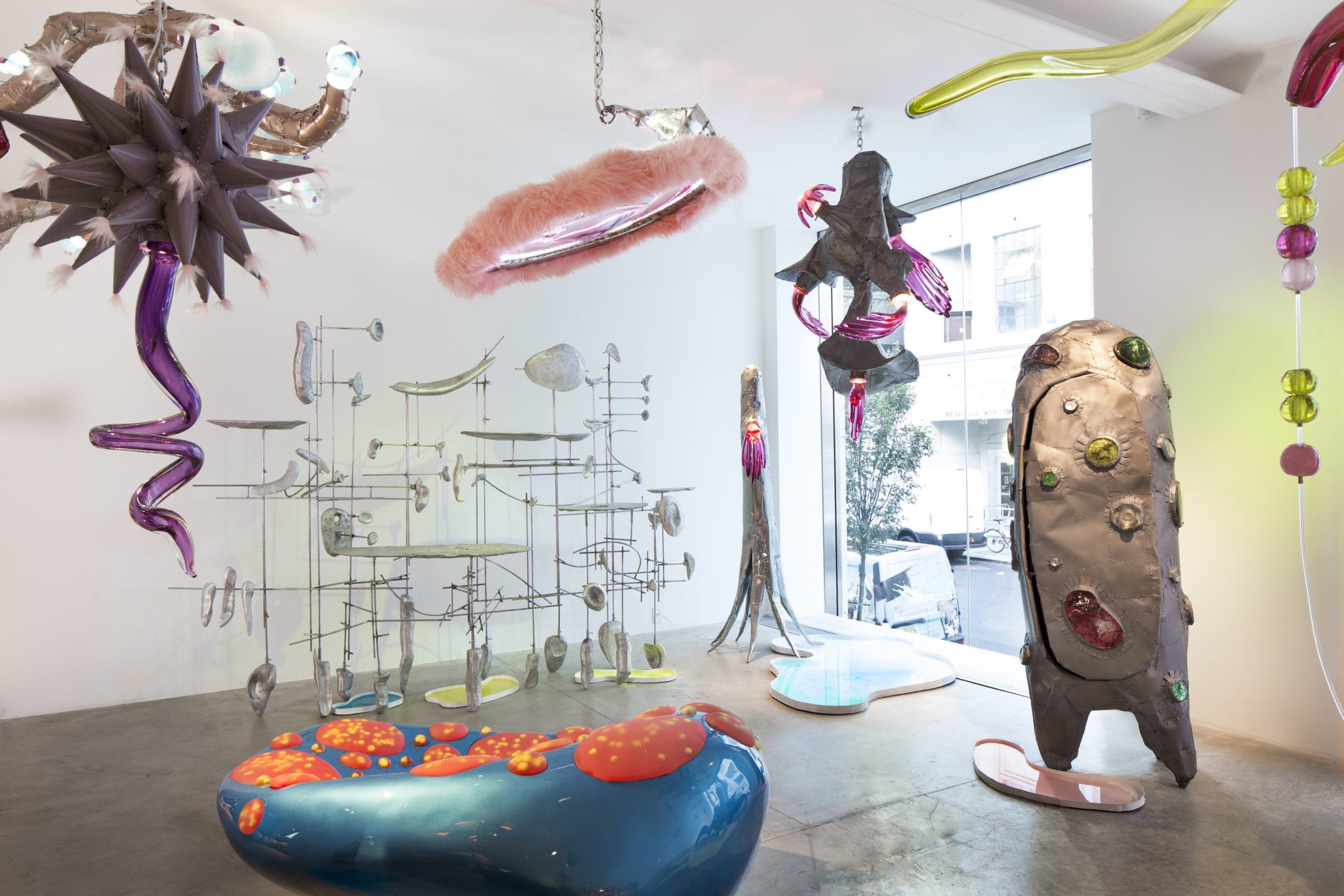
“Midden Heap” at Friedman Benda.
Courtesy of Friedman Benda and Misha Kahn.
Photography by Dan Kukla.
A lot of the objects in my show I didn’t know whether I loved or hated when making them. I feel like there’s so much uncertainty. A lot of times, there’s so much mystery.
WW: In the past, you did some really interesting look book shoots with Barneys New York. We saw one of your copper pieces for Valentino, and some cement stools, too. How did that partnership come to fruition?
MK: When I first moved to New York, I got a job working with an incredible prop stylist, which actually was the best way to have another way to see the visual world. From that, now I’m kind of too busy with my own things, but occasionally, I’ll get to do a shoot and kind of use that experience. It’s nice to do something so fast. It’s one day, whereas with furniture, you’re working on it for months. You get to do something quick and create an expressive gesture for a photo.
WW: Tell us about your upcoming show “Midden Heap” at Friedman Benda, and the discoveries on Dead Horse Bay. What was your starting point?
MK: The show includes lots of trash collected from the beach and is inspired by these warped and tangled objects as litmus strips for how the sea alters our material world. As the sea swallows us, we will be forced to adapt to our new captor. The work includes a frenetic use of stained glass, weaving, metal cladding, glass blowing, and bronze casting. The show explores this overarching aesthetic pressure through my own lens of making—a kind of new craft ethos that welcomes the distracted scatterbrained mind, erratically mixing media and feeling no preciousness about material or method.
The show has developed in a very meandering way, but the jumping off point was definitely noticing how much objects are formed by their environment, which was really evident in these tangled up, deformed magical trash items washing up on shore. Thinking about how objects adapt to their environments is such a classic design concern, but I wanted to come at it from an emotional standpoint rather than a functionally pragmatic one.
WW: You once told us that sometimes you don’t know if you love or hate something, and you’re not sure sometimes when pieces are “done” or not. When do you decide to walk away, when you’re practice is so rooted in spontaneity?
MK: Hmm, usually we’ll be grappling with a piece while making it, and then it will feel evident it needs something or isn’t working yet. There’s a feeling when an object is finished, like the object is satisfied with its own existence. I suppose I think they’re much more confident than me in that sense. I frequently make sound effects and noises that go along with the objects, like a “woosh” or a “slurp” or some odd “beeps.” I guess when you can hear them making that noise I know it’s done.
I say I don’t know if I like them because if I’m sure I’ll like a piece when we start, I’m not interested in doing it. I like the feeling of grappling with the risk of discomfort or aesthetic embarrassment. I think this want to walk that line gives the objects their edge. I also think perhaps there’s this relationship with working with refuse, and then working with aesthetic reference points that might also be refuse…
WW: You’ve also said that objects don’t necessarily have meaning, but that it’s “all part of a feeling.” What type of feeling does this exhibition give you? What type do you think it will give others?
MK: Part of the show is meant to feel toxic and claustrophobic, like we sent out probes and they came back covered in a toxic bacterial luxury sludge. The other part of the show feels like a celebration of making something energetic and full of life out of nothingness. I guess I had to illustrate it in my own terms. It’s a hope for a rebirth after all this destruction.
This article appears in the Whitewall Couture issue, out now.



